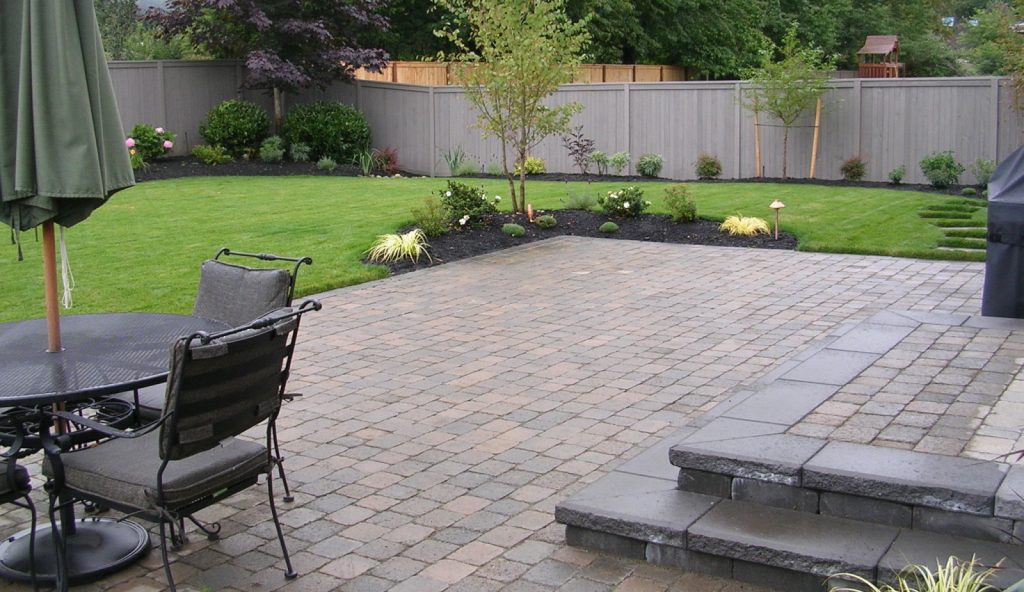Persistent greasy stains – from cars, birds and trees, mostly – can ruin the appearance of an entire property. There are several ways to clean it.
Just as no man is an island, no driveway is one either. A home’s concrete driveway in particular can add great value to the home it services. But maintaining that driveway, keeping it clean from oil and tree and bird dropping stains, is essential for making sure it adds value instead of detracting from it.
As any realtor can tell you, driveways are important to the look – and value – of a home. A concrete driveway contractor also knows this, as well as asphalt paving contractors. They’re busy six days a week designing, constructing and repairing driveways.
That said, certain cleaning methods can be overzealous and harmful to surrounding landscaping as well as the person working with it. So we’ll break down the methods and materials used for washing a concrete driveway with particular attention to (a) what works at cleaning and (b) its potential harmful effects on plants and wildlife, plus ways of mitigating the harm.
But first it helps to understand what you’re up against. Start with color: concrete is somewhere between grey and white, so it’s less forgiving of stains than asphalt. So whether it’s motor oil or crushed elderberries or berry-eating bird droppings from a tree, dark stains are more evident on concrete. Also, the surface of concrete driveways is generally porous, so other liquids absorb and stick to it. Your work is cut out for you if your car has an oil pan leak.
Here are ways to go about cleaning the concrete driveway surface, with due warnings on what might go wrong.
Soap and scrub: A quick, if not exhausting, method is good old dish soap and water with a good scrub brush. Even if it doesn’t fully remove a stain it can reduce your need for other methods. Where there is a slope and several stains (and all driveways should have some slope to shed rainwater), start at the top so that the soapy water runs down to where you’re cleaning next.
Power wash: Why do the hard scrubbing when water pressure can do it for you? Use the fan tip washer nozzle – best a 25-degree fan or 15-degree nozzle for particularly stubborn stains – to dig into the stain. A tighter fan might damage the concrete, and take care not to aim the wash at other people or pets, as it could cause injury. Also, as with soap and scrub, start at the top of the driveway and work your way down.
Degreasing cleaner: If a persistent stain needs a little something stronger than dish detergent, kick it up a notch with trisodium phosphate (TSP). This is a degreaser used by professionals for tough, oily stains. In a mix of 1:30 (about one cup to a gallon of water), apply it to the stained area and allow it to sit for 20 minutes, then scrub and rinse with a garden hose. For particularly egregious stains, add grit by including cornstarch or diatomaceous earth to the TSP to create a paste.
TSP can damage the skin and eyes, so wear protective gloves and eyewear. TSP can also be used to kill harmful fungus and bacteria in gardens and indoors. But be considerate of nearby natural ponds and lakes where the high alkalinity can lead to algae growth. A small amount shouldn’t upend a local pond’s ecosystem, but frequent and heavy use might.
Chlorine bleach: Just as with sheets and nice dress shirts, chlorine bleach can brighten the white color of a concrete driveway in addition to helping clean it. Mix it in a 1:1 ratio with water, then scrub it into the stain. But just as it can hurt the eyes and other sensitive areas, it can be deadly to plants where the water washes off the driveway. In tightly packed neighborhoods where lot lines coincide with the side of a driveway, it often happens that the neighbors plants are killed – which no one wants to happen. Proceed with caution and courtesy.
By all means keep that driveway clean, but in a way that causes no harm. The very definition of curb appeal is surprisingly dependent on the look of a driveway – and the adjacent flora.

